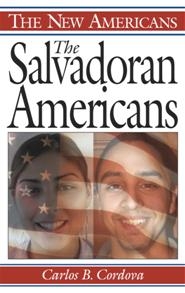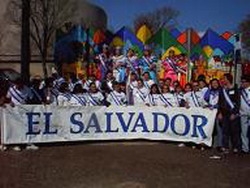- Posted By: Myriam Grajales-Hall
- Written by: By Matt O'Brien, Contra Costa Times

According to a story in the Contra Costa Times, those whose roots extend to El Salvador, one of the smallest and densest countries in the Western Hemisphere, now number more than 1.6 million in the United States, and about 35 percent reside in California. The latest tally means that Salvadoran-Americans have surpassed Dominican-Americans in number and are swiftly gaining on Cuban-Americans.
Those who hope the higher numbers translate into the political and economic influence reached by Mexican-Americans in California and Caribbean Latinos elsewhere say they still have work to do.
"Numbers give you a certain kind of power, but of course, you have to transfer that quantity of numbers into quality," said Ramon Cardona, a Salvadoran immigrant and director of Richmond's Centro Latino Cuzcatlan. "One big advantage that Cubanos have is a lot of them came from the elite powers in Cuba, they knew how to run systems, how to run private enterprise and government institutions. In the case of Salvadorans, that was not the case. We had to forge and educate ourselves here, underground. That takes a couple generations to get the know-how and move into those kind of ranks."
The nation's 31.8 million Mexican-Americans continue to outnumber all other Latino groups, at 63 percent of the total Latino population. Following them are roughly 4.6 million Puerto Ricans, 1.8 million Cubans, 1.6 million Salvadorans, 1.4 million Dominicans and one million Guatemalans.
The fact that the nation's Salvadoran community remains smaller than its Cuban community was a surprise to some demographers tracking various surveys; they expected the Salvadoran population to be higher.
The U.S. Census Bureau has not yet released figures about the Salvadoran population and other Central American groups by cities or counties, but recent surveys show the Bay Area remains one of the nation's Salvadoran hubs.

One of the biggest waves of Salvadoran immigrants arrived amid the Central American country's civil war that lasted from 1980 to 1992. Unlike Cuban refugees, who were granted routine asylum if they could manage to flee the communist island nation, many Salvadorans were declared economic migrants and turned away. Cities including San Francisco and Oakland declared themselves sanctuaries for undocumented immigrants, especially those fleeing repression and violence in Central America who crossed the border seeking refuge.
The percentage of Salvadorans and other Central Americans who are living in the country illegally remains higher than many other Latino groups, a factor that might make them harder to count.
Source: The Contra Costa Times, “Salvadorans now fourth largest Latino group in U.S.,” by Matt O’Brien, May 26, 2011.


